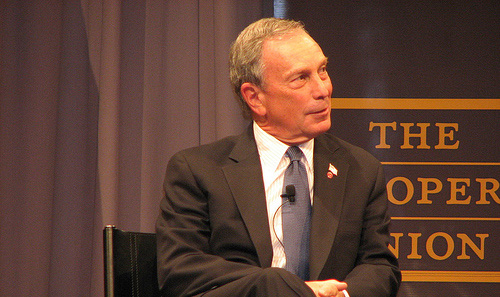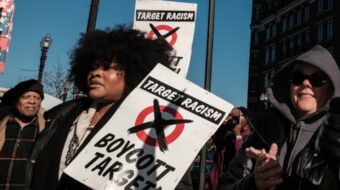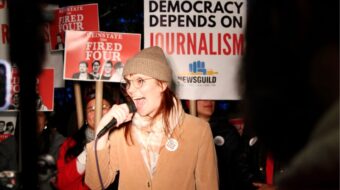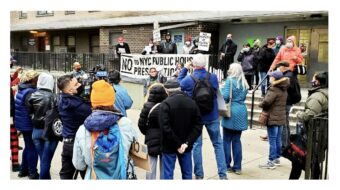
Reading the news, one could be forgiven for believing the false notion that there is too little money in the state of New York. The state budget – due on April 1 – still hasn’t been passed, as Albany can’t come to an agreement on how to plug the $5 billion deficit. Instead, the legislature has been passing a series of week-long budget extenders to keep the government running.
But while the effects of the crisis are real, the perceived lack of wealth is not.
A federal court struck down Gov. David Paterson’s plan to furlough state workers and delay their pay raises, and now he is now calling for thousands of layoffs. Paterson openly questions whether or not an agreement made between labor and the state in 2009, which says that there would be no layoffs in return for big pension concessions from labor, is binding. Even if it can’t be overridden, the governor is laying the groundwork for the layoffs to take place as soon as the agreement expires.
On top of that, many in the state Legislature are working to slash funding to education, aid to cities and towns, health care and other areas. In New York City, Mayor Michael Bloomberg has taken advantage of the situation and is pushing to reduce the city’s workforce by nearly 4 percent. After widespread protest, the mayor was forced to retreat on his plan to axe several thousand teachers, but he is now threatening their planned pay raises.
All across the city and state, the effects of the budget crisis are being felt. Even the New York Public Library has been forced to send out appeals to its supporters urging them to get in touch with their local representative to halt the mayor’s proposal for the biggest funding cut to the library system in the city’s history. The transit system is planning to lay off hundreds of station agents (there would have been more had a judge not intervened) and to shut down train lines and bus routes.
On the surface, the deficits seem huge. The state is short $9.2 billion, and the corresponding figure for the city is $4.9 billion. In addition, the MTA, a public authority, faces an $800 million shortfall.
What to do?
Of course, there are a number of ways to reduce wasteful spending without cutting services important to working people, and a number of watchdog groups and unions have pointed them out.
But the money is there. Instead of making draconian cuts, the state should simply raise revenue.
Let’s put the deficit into perspective: If you add up the city and state deficit, and throw in the MTA to boot, you come up with a total of $14.9 billion. Our mayor, who is presiding over the gutting of people’s living standards, is a billionaire. So much of a billionaire, in fact, that he could pay off all of the city and state debts and still have more than $2 billion left over. To put that number into perspective, Bloomberg would then, if he lives to be 108 years old, still have, not accounting for interest, $50 million per year to live off of.
And there are more like Bloomberg: According to a 2008 issue of Forbes, there are 70 other billionaires in the city limits, and they have an average net value of $3.3 billion. These 70 New Yorkers – out of nearly 8.5 million and not including the mayor – control $231 billion alone.
On top of all that, this is the home of Wall Street and its huge firms like Goldman Sachs and others, and countless multi-millionaires.
Compared to all this wealth, the $15 billion the state needs to sustain services to working people seems like a trifle.
Aside from the pressure that monopoly capital can put on the city and state governments, there is simply no reason for New York to face layoffs or cuts to social services. Perhaps more than any other state in the country, we can, if the political will is there, balance the budget – or go further and enact our own statewide stimulus plan.
A small surcharge on the billionaires, a stock transfer tax (specifically tailored to exempt 401k and other pension savings), ensuring that the Fair Share tax law doesn’t sunset: all of these things could solve our budget problem.
A planned demonstration by AFSCME District Council 37, which represents 125,000 city public workers, as well as a number of other rallies and campaigns to get people to contact their representatives, are all steps in the right direction.
What’s needed is the reemergence of the coalition that enacted the Fair Share Tax Reform a couple of years ago, a broad alliance of all New York City labor, the Working Families Party, the African American, Latino, Asian American communities, religious groups and others.
Photo: New York City’s mayor, billionaire Michael Bloomberg. cc 2.0










